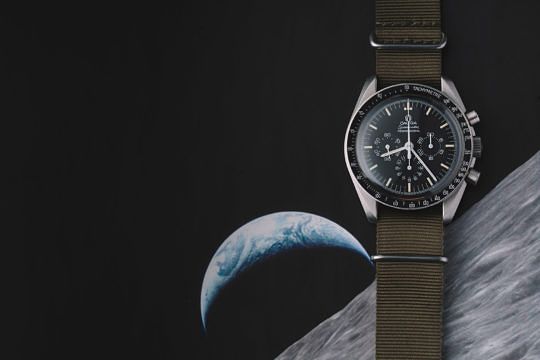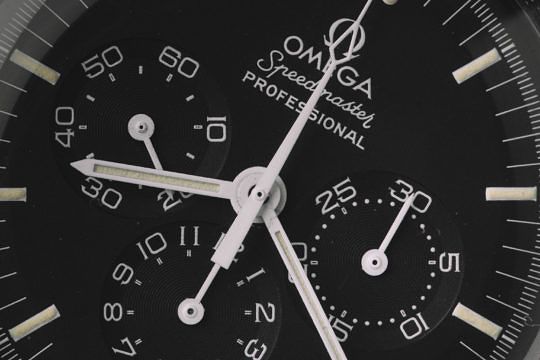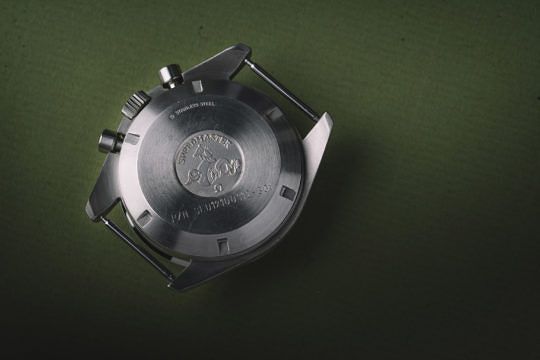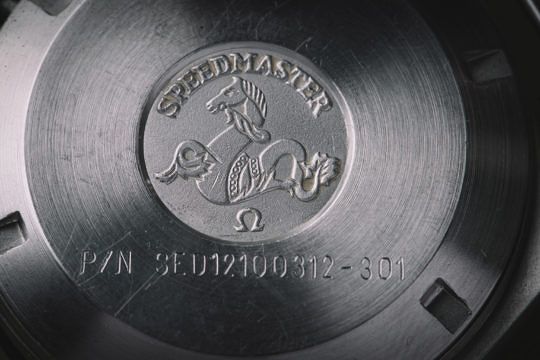Omega Ref. 145.022. An extremely rare, important, and highly attractive prototype stainless steel chronograph wristwatch with radial dial, made for NASA, 1978
Sixty years. That's how long Omega has been making the Speedmaster. Remarkably little has changed between the original model and those which the company make today, and depending on the type of collector you are, this makes Omega's famous chronograph incredibly collectible, or not at all.
But there are certain models that everyone will agree are hugely important and exciting. Those would be the watches codenamed Alaska Project. The most well-known and most peculiar is the Alaska II, which was delivered shortly before Project Apollo came to an end.
And then there's the Alaska III. Isn't as rare as the Alaska I or the Alaska II, but it was the first of the series to make it past qualification tests, and the first to make it to space. And that makes it special on a whole other level.
NASA ordered two separate batches of Alaska III models, and this particular model is part of the second batch. That makes it hugely significant to collectors because it was never issued, making it one of the only Alaska III models that private collectors are allowed to own.
The Omega Speedmaster Professional was cleared by NASA experts for all of its manned space missions in 1965, but even before the first model had landed on the moon, the same experts were speaking to Omega about implementing a few aesthetic changes in order to create the ultimate space watch.
Meetings were held secretly in Houston in the late 1960s, and the first exchange of ideas discussed led to the creation of the Alaska project, and a whole new series of watches over a period of ten years.
"The two most important things, it was decided, were to protect the chronograph's movement at all costs and to ensure the utmost legibility at all times," explains Omega's Museum Director, Petros Protopapas. "Starting with the very first project, internally simply referred to as Alaska Project, the developments kept OMEGA's technician's and designers active and busy until well into the 1970s, with several different versions being proposed to the engineers at NASA at different stages."
While the production of Alaska I and Alaska II were both halted abruptly, some of the technology implemented in these watches would find their way into the third project. Just like the second Alaska, Omega would use reference 145.022 as a base for the Alaska III, but a few things make it clear this wasn't your typical cal. 861 Speedmaster.
First of all, the watch features a radial dial, which is a design Omega used in very limited numbers for the Seamaster and Speedmaster Mark II lines in the 1960s, but which is not what you expect to see on a regular Speedmaster. The dial was specifically chosen by NASA engineer James H. Ragan as he felt the layout was more legible than the Speedmaster Professional issued to astronauts at the time.
"Redesigning the sub-counters of the chronograph and changing their markings into a radial layout ensured an easier and more exact way of reading the chronograph's elapsed timing results," says Protopapas. Another important distinction was the treatment of the case. These were blasted using microbeads to reduce glare, because light might reflect on the metallic case in ways that could bother astronauts during operations.
NASA found itself coming under pressure from American watchmakers to issue domestically-made chronographs to their astronauts.
The dial design and the anti-reflective case were both features inherited from previous iterations of the Alaska project, but Omega would be forced into even more changes, some of them more unexpected than others.
Notice Switzerland is mentioned nowhere on the dial? Seems a little odd, right? In fact, these dials were made in Switzerland, but the company wasn't necessarily keen to highlight this. A few years before the completion of the Alaska III project, NASA found itself coming under pressure from American watchmakers to issue domestically-made chronographs to their astronauts.
The only watches that had seen the surface of the moon were Swiss, and that irked local watchmakers. However, they were not able to supply an adequate replacement, and following a series of brief and inconclusive tests, Omega remained the official supplier until the very last manned lunar landing.
Six years later, the Space Shuttle program gave American watchmakers another chance to get their watches into orbit but Omega was ready with an answer. The Swiss company, who had started on the third Alaska project watch, displayed its willingness to comply with the 'Buy American' regulations by agreeing to outsource the production of its cases and even found a local manufacturer in Luddington, Michigan.
This brought the total value of the American production of the watch past the minimum requirement, which meant the Speedmaster was once again cleared for procurement.
After a series of environmental tests which pitted Bulova and Omega against each other – again – NASA found the Speedmaster superior – again.
Of course, the movements were made and installed in Switzerland, and the watch was inspected at the Omega manufacture, in Bienne, after full assembly, but the Alaska III was, legally and in the eyes of the United States, an American watch, and that makes it a bit of an oddball in Omega's production.
The Alaska III was eventually sent in as one of three candidates when NASA initiated a new solicitation in 1978 for the Space Shuttle program. After a series of environmental tests which pitted Bulova and Omega against each other – again – NASA found the Speedmaster superior – again. The so-called "radial dial" Moonwatch became the first of many Alaska projects to become officially flight-qualified.
"These watches were used during all Space Shuttle missions until NASA started receiving OMEGA Speedmaster X-33 models in the late 1990s," explains Protopapas. "Even after the Speedmaster X-33 arrived at NASA, the 'radial dial' Speedmasters remained on the active inventory for many years."
NASA ordered fifty-six examples of the Alaska III , before placing a second order shortly afterward.
The present model is part of the second batch, which we know was smaller and probably meant as a back-up to the first. The exact production numbers remain unknown and a topic which Omega is currently looking into.
In fact, this is the first time this reference will be sold publicly, and nobody really knows the reaction it will receive later this month when it goes under the hammer, but its direct linkage to NASA's space program and intriguing history make it one of the most interesting Speedmasters ever to appear on the market.





